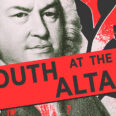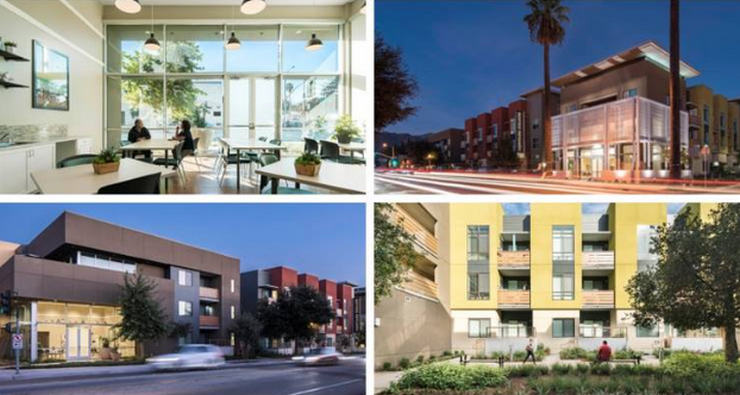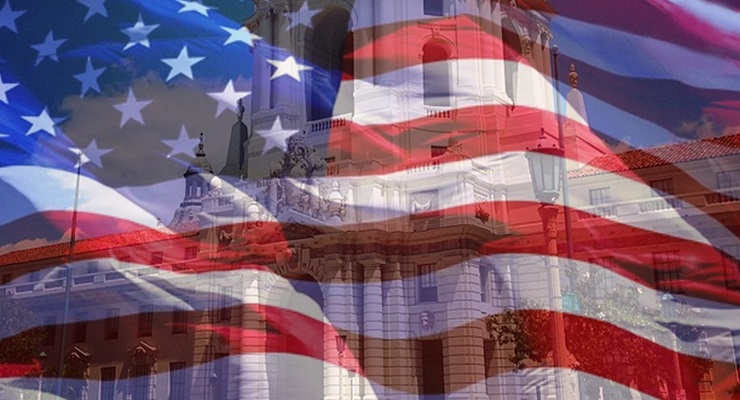
With many businesses shuttered during the coronavirus crisis, and all of them economically stressed, the federal government in recent weeks rolled out a pair of acronym-tagged loan programs that can serve as lifeboats to many employers with their payrolls, capital expenses and other costs.
They’re called the Economic Injury Disaster Loan (EIDL) program and the Paycheck Protection Plan (PPP), and they’re run under the umbrella of the U.S. Small Business Administration (SBA).
It may all seem to be more confounding wrinkles for business owners already dazed by the devastating hit the economy has absorbed as a result of COVID-19.

But in fact, the programs are relatively simple and “a phenomenal opportunity for small business,’’ according to Daniel J. Lien, a 42-year banking veteran who now runs DJL Professional Services, a San Gabriel Valley-based concierge banking and business-financing consulting firm.
“In my 42 years of commercial banking, I have never seen such a loan application package to be so small and easy to navigate and complete. The number of forms are extremely low,” said Lien — who has shifted his focus in recent weeks to helping business owners apply for the new loans … while stressing that employers can also do so themselves at no cost.
EIDL loan applications can go through the SBA website at www.sba.gov/. PPP loans must go through a bank or lender.
Advisers such as Lien do collect fees for helping businesses navigate the paperwork of the EIDL program and keep required records thereafter, as well as advising employers through full loan amortization. But the fee is capped by the SBA at $2,500.
Lien said he’s been retained by about 70 businesses in recent weeks regarding the EIDL and PPP programs. Many are from Pasadena and the San Gabriel Valley, he said.
“Both (programs) are available to sole proprietorships, all partnership corporations, independent contractors and self-employed individuals,’’ Lien said. “(They are) also available to nonprofits (and) tribal businesses. That is also a rarity – typically, SBA programs are not accessible by nonprofits.”
In a nutshell, the EIDL can provide up to $2 million for payroll and capital needs, with a fixed interest rate of 3.75 percent (2.75 percent for nonprofits), one year of deferred payment and a 30-year payback schedule. It is also administered directly by the SBA, not through a bank or other lender.
The PPP, which Lien called “more robust,” comes via a bank or other lender, caps at $10 million, defers repayment for six months and offers a repayment schedule of 10 years at a fixed rate of 1 percent.
Significantly, the PPP also offers consideration of loan forgiveness under certain conditions. It’s intended to cover eight weeks of payroll costs, and is aimed at helping companies retain workers or hire back laid-off employees. In fact, those are key elements of the program’s forgiveness clauses.
Businesses with 500 or fewer employees are eligible. Neither program has a prepayment penalty.
The money for the programs comes from a pool of $350 billion that is part of President Trump’s $2 trillion stimulus program. It’s available on a first-come, first-served basis, but the administration is pushing Congress for another $250 billion to expand the PPP pool.
“If you look at these loans, they are pretty much unsecured,’’ Lien said. “So, the benefit to the client is to cover the working capital, keep their business open even though they’re not open for full operation, and actually they have the ability to at least obtain funding for six months of their operations.”
Relatedly, sole proprietors and freelancers are now eligible, for the first time, for unemployment benefits, Lien pointed out. Under provisions of the CARES Act, self-employed people can claim up to $100,000 in “wage, commission, income (and) net earnings from self-employment or similar compensation.”
Here’s a look, through Lien’s eyes, at some of the nuances of the EIDL and the PPP:
THE ECONOMIC INJURY DISASTER LOAN
How Does It Work? “It’s designed for funding up to $2 million to assist small business with payroll and six months of working capital needs for their business. This program is not like other SBA programs. There are no lenders involved. This one is directly with the SBA.”
Who Is Eligible? “Any business of under 500 employees as long as they were in operation on Feb. 15, 2020.”
How Does One Apply? “While we talk about these as being loan programs, these are not traditional, in which the client requests a loan amount. It’s a very easy application process – a two-page application for the business or proprietor, and a one-page summary of their gross revenues and the cost of goods sold for the previous 12 months prior to the virus. For ease, with most small businesses, I have them report the year-end total of 2019.”
Can You Be Rejected? “There’s a slight possibility of denial. The two-page application and the one-page economic summary are submitted to the SBA. Under the EIDL program, (a business) can then select to be considered for an up to $10,000 grant. That grant is considered more or less an advance to fast-pace cash in the hands of the borrower while the rest of the application is processed. Once approved, they will need some minimal background information such as one year of a business financial statement or their 2019 tax return if it is available.
“And then the key to accessing funding on this loan: There’s a simple two-page process; one that reports just historic sales figures for 2017, 2018 and 2019, just the gross revenues; the next page is crucial in the funding, and what they are requesting is that for a six-month period, you would project your sales for that time frame. And most likely, sales are going to be impaired probably into May.
“You then have to project six months of your working capital. The six-month projection is actually quite good – it covers the owner’s salary, any employees’ wages, advertising, rent, utilities, interest, taxes, insurance, and any other expense that’s a part of your working capital.”
How Much Are You Likely To Get? “They will fund up to one to two times the six-month working capital need, and make that offer to the borrower. And if agreed upon, they will then produce the loan documentation.”
What About Interest and Repayment? “Once accepted, the payments are deferred for one year. The interest rate on this loan is fixed at 3.75 percent, and the interest payments and principal payments begin after the one-year deferment and are amortized up to 30 years.”
Any Other Details? “There’s one important disclosure you have to put on that product. The EIDL, with its funding accessibility up to $2 million, does not offer a forgiveness consideration. So when that’s funded, that program runs. There’s no pre-payment penalty fees on that loan … however, there’s no consideration of any balance on that loan to be forgiven.”
THE PAYCHECK PROTECTION PLAN
How Does It Differ From the EIDL? “It is very centered on the payroll, the paycheck, versus the EIDL, (which) concentrates on the six months of working capital.
“The PPP (is arrived at) simply by calculating the average monthly payroll, which is done by using that same previous 12-month period for your company prior to the virus, and they can actually add back additional expenses to the payroll, such as health-care expenses to cover employees, retirement-benefit expenses, and there are others.
“So you will be able to put more than just the actual payroll average – you will increase that by related expenses that are allowed.’”
This Program Must Go Through A Lender? “The PPP program is facilitated like the more traditional SBA loan programs – this one must go through a lender. That would be a bank, or it could be a non-bank, SBA-approved lender.”
What’s The Cap On The PPP? “This program caps at $10 million.”
How Is A Particular Business’s Loan Amount Calculated? “The average monthly payroll is multiplied by 2.5. And to multiply that by 2.5 allows that coverage of eight weeks of payroll.
“In this program, the borrower then can select to also consider being covered (for) their lease for their property or the interest on the mortgage of their property if they own it, utilities and other expenses as allowed in the SBA guide.
“So, they do have an option to request an advance to cover working capital as well.”
Any Other Details? “Another benefit to the PPP is, there are no collateral requirements, no personal guarantees, and neither one of these plans have any SBA fees. The PPP plan prohibits any lender from charging a fee for the application, documentation, loan processing or ongoing loan servicing.”
What About Interest and Repayment? “The deferment of payments is six months. The loan term is two years and can be amortized up to 10 years. This program is at a fixed rate of 1 percent.”
The PPP Has A Loan-Forgiveness Element. How Does That Work? “The important thing on the PPP is, unlike the EIDL, at the end of that two-year term, there is a consideration of forgiveness, which is very key and important.
“If the borrower, in its total funding from this borrowing, can record and prove to the SBA that at least 75 percent of the total funding of the loan is spent on payroll and payroll-related costs — forgiveness is based on the employer maintaining or quickly rehiring employees and maintaining salary levels.
“The best way to look at it is, you want to return to a like employment base that you had prior to the virus, and you want to maintain that level.”
Can A Business Apply For Both Programs? “While you could possibly have funding and borrowing on both programs, the SBA guideline is, you can only apply for one emergency loan.
“Let’s say that, as this is a first-come, first-served funding source … if a client applies through the EIDL, they then have the option to apply to the PPP if they disclose that they have applied for an EIDL, and if they have been funded by the EIDL.
“Any funding within the EIDL … would reduce the amount of funding in the PPP. Most likely, you would want to use the feature of refinancing the EIDL into the PPP to maximize the Consideration of Forgiveness.”
So Which Program Is Best For My Business? “You might want to reach out to a professional who can explain each plan as it relates specifically to your business. Benefits are drastically impacted by the way in which your business operates. Determining factors would be your business formation (for instance, is it an S Corporation or a C-Corporation?) and payroll structure. The size of the business doesn’t really matter, it’s those factors that matter.”
Lien’s firm, DJL Professional Services, is one of numerous such professional services available. DJL’s website is: djlprofessional.com/
***
Meanwhile, the California Small Business Development Center is hosting daily webinars at 3 p.m. with information on the EIDL, Disaster Bridge Loans and other funding relief for businesses. You can register at bit.ly/2JWtLPN#COVID19














 1 comment
1 comment


